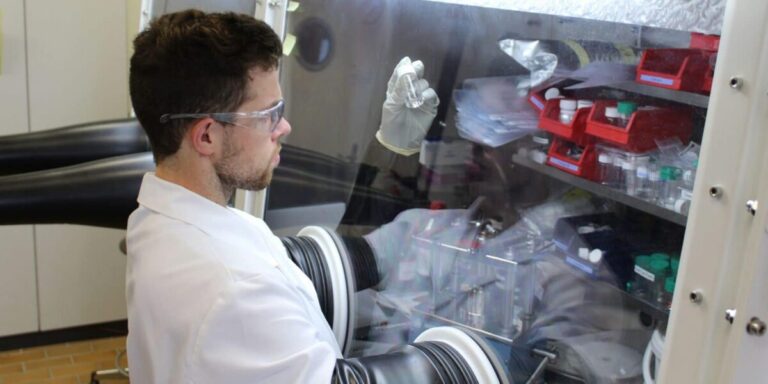A European research consortium has produced a prototype solid-state battery using a new manufacturing process that reportedly achieves high energy densities and can be implemented on modern lithium-ion battery production lines.
European researchers have developed a prototype lithium-metal battery with a solid electrolyte, which offers a 20% higher energy density than current lithium-ion batteries.
The ‘SOLiDIFY’ consortium, consisting of 14 European research institutes and partners, developed a pouch cell battery with an energy density of 1,070 Wh/L, compared to 800 Wh/L in standard lithium-ion batteries.
The consortium created a pocket cell with an energy density of 1,070 Wh/L at EnergyVille, a Belgian research laboratory. The group said state-of-the-art lithium-ion batteries only reach about 800 Wh/L.
The team used a thick cathode made of nickel, manganese and cobalt (NMC) with a thin lithium metal anode and a thin solid electrolyte separator. Solvionic, a France-based technology company, developed the solid-state electrolyte using a polymerized nanocomposite material based on an ionic liquid specifically for the prototype.
The electrolyte changed phase from liquid to solid, allowing thin electrolyte layers of 20 micrometers to be deposited on 100 micrometer cathodes. These advances enable the creation of compact battery cell stacks and higher volumetric energy densities.
The Swiss Federal Laboratories for Materials Science and Technology (Empa) has already applied for a patent for the new approach.
The consortium developed a production process that works at room temperature and uses existing lithium-ion battery production lines.
The group estimates the cost of the batteries at €150/kWh, compared to BloombergNEF’s current estimates of €67/kWh for lithium iron phosphate batteries and €93/kWh for high-nickel NMC batteries.
Empa has said that a price of €150/kWh still allows affordable technology transfer in the industry.
The consortium partners have reduced cell charging time to three hours and improved thermal stability compared to lithium-ion cells.
This content is copyrighted and may not be reused. If you would like to collaborate with us and reuse some of our content, please contact: editors@pv-magazine.com.


